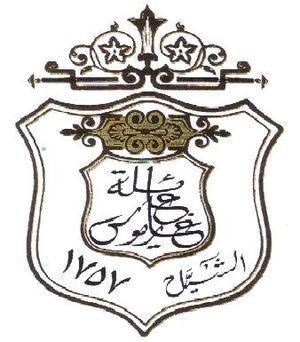 | ||
Prince gharios living royal in today s world
Gharios (in Arabic غاريوس, in Greek Γαρíος, pronounced Ghariyos) is the name of Saint Gurias the Ascetic of Edessa (Today Rouha also known as Orfa or Sanliourfa in Turkey), martyr of the 4th century; he died in 305 AD. It is also the name of one of the most socially and economically prominent families in Lebanon rooting back their ancestries to the Sheiks Chemor of Kfarhata (former Christian inhabitants of Akoura and rulers of Zgharta). Their religion is Maronite Christian and they are of direct legitimate descendance of the Christian Ghassanids. Their hometown is Chiyah, a predominantly Christian town located in the southern suburbs of the capital Beirut bordered by Haret-Hreik, Ghobeiry, Hadath and Furn-el-chebbak.
Contents
- Prince gharios living royal in today s world
- Hirh prince gharios el chemor of ghassan al numan viii addresses the german parliament
- History
- Today
- References
Hirh prince gharios el chemor of ghassan al numan viii addresses the german parliament
History
According to a historical book named The Sheiks Chemors written by father Aghnatios Khoury around 1950, the family Gharios of Chiyah is formally called “Gharios Habbaki Chemor” due to the village of Beit Habbak in the region of Byblos. This Habbaki family is issued from the prestigious “Chemor” family of Kfarhata-Zgharta.
The Chemors of Kfarhata have the title of Sheiks. They were the inhabitants of Akoura in the mountains of Byblos between 1211 and 1633 and the rulers of Zgharta-Zawiya between 1641 and 1747. Their ancestors were the Ghassanids, a Christian tribe that dwelled in the Arabian Peninsula. After being displaced from Yemen because of a natural disaster, they settled in the Houran region of Syria. They allied themselves to the Byzantines as protectors of the South. After the Islamic conquest of the region, they sought refuge in the Lebanon. Their first see was in Akoura (Byblos district) then they moved to Kfarhata in 1641.
At the beginning of the 18th century, some troubles occurred between the Sheiks Chemor and the Daher family. As a result, a member of the Chemors was compelled to flee the village and take refuge in a small oversighted village in the uphill of Byblos, Beit Habbak. He went there with his four sons and his only daughter. The latter got married with the son of the concierge although her family did not accept it. Her brothers had her husband killed and were once again obliged to run away from the village.
The first son went to the mountainous village of Baskinta and because he came from Beit Habbak, he was called “Habbaki”, which later became “Hobeika”. The second one, Ferjane Chemor, had the courage to stay in Beit Habbak. Nowadays his offspring are known as the “Ferjane”. The last two brothers, Farhat and Gharios,' went to the suburbs of Beirut, where water is available and citrus trees are abundant. Farhat Chemor is today survived by a large family in Hadath known as the “Farhat”. Gharios Chemor' went to Chiyah in 1757. His son Antoun took the name of his father as his family name like his uncles. We don’t know if Antoun had brothers or sisters but we are sure that he had two sons: Fares (confirmed on 19 April 1849) and Youssef (confirmed in 1852).
Today
A century ago, the land of Chiyah was mainly covered with citrus trees interspersed with manor houses owned by the finest and richest families of Chiyah. The manor house of the family Gharios was situated at the Boulevard Camille Chamoun in front of today’s lead statue. This mansion was owned by the parish priest of the village Youssef Gharios who was born between 1830 and 1850 directed the church of Saint Michael of Chiyah since 1877.
He is now survived by his descendants that remained attached to their land and few of them immigrated to Colombia, Chile and the United States. Today, the Gharios family play an important role at the forefront of the Lebanese society; their businesses are spread throughout the country and distributed in very different sectors.
Edmond Gharios was the former head of the municipality of Chiyah for the last eleven years. He resigned in December 2008 to prepare his electoral campaign to enter the Lebanese Parliament in June 2009. After an unsuccessful run for parliamentary office, he went back to head the Chiyah municipality council in 2010.
Naji Gharios was elected to the Lebanese Parliament as a representative of the Baabda district in June 2009 and is currently serving a four-year term.
